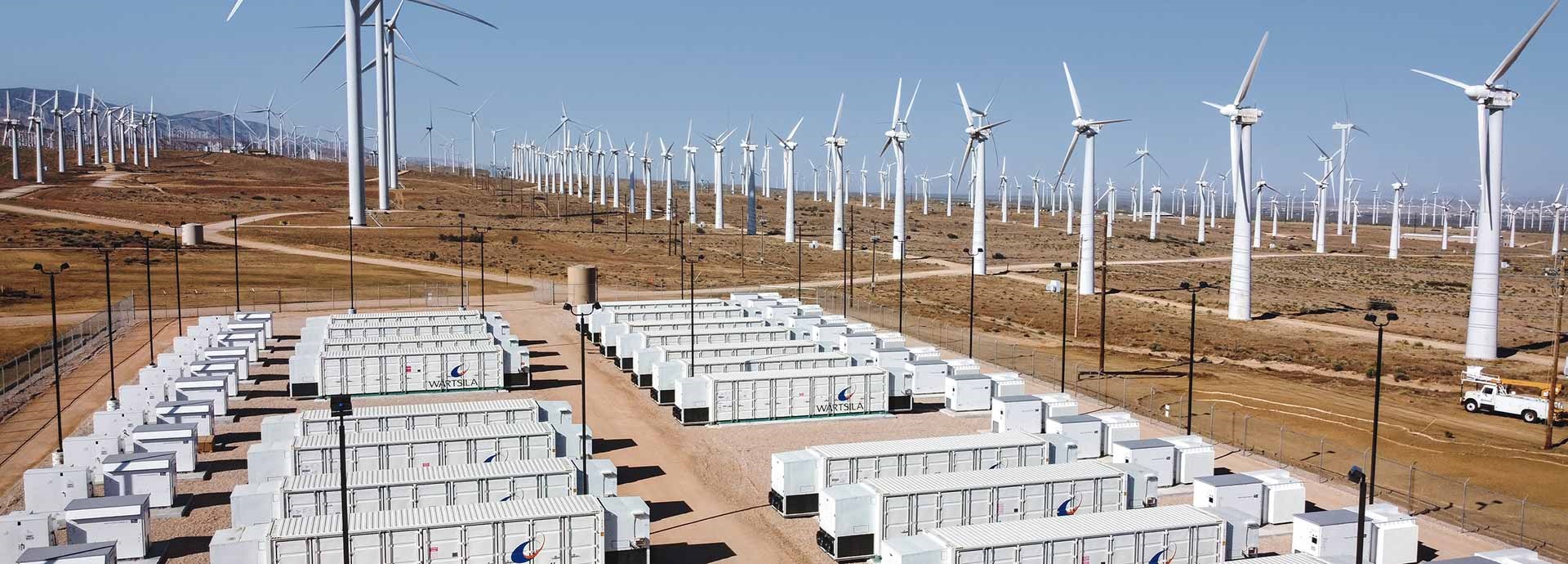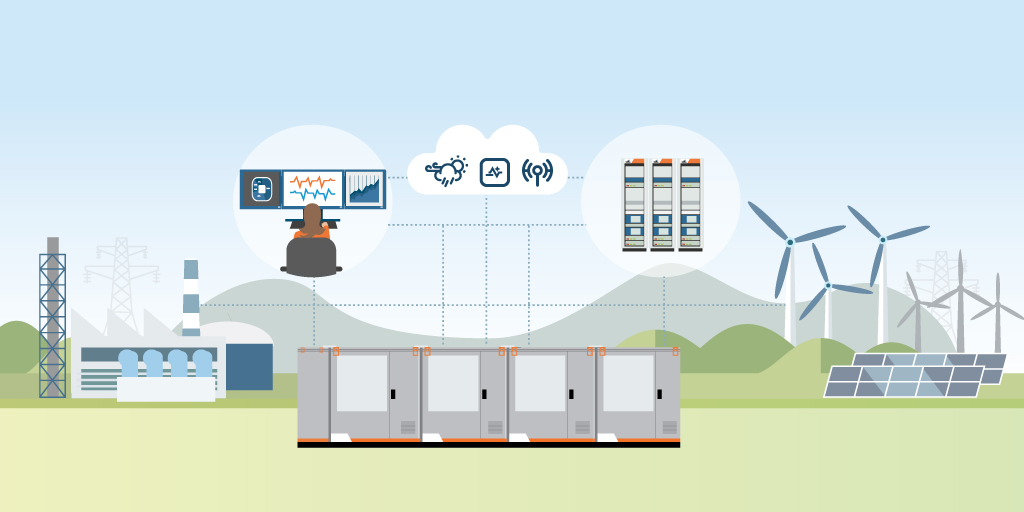

The transition to a 100% renewable energy future has serious momentum behind it. Yet the sun doesn’t always shine, the wind doesn’t always blow, and droughts can lower hydropower output.
We need flexibility - energy storage and thermal balancing - in our energy systems to match the supply and demand of electricity in our optimised energy future. Let’s have a closer look at the role of energy storage technology in all this. To visualise how this works, we follow 24 hours in the day of a family who live in a balanced energy system.
Batteries in demand
The mother and father in our family wake up at 6am. It is a rainy and windy day, so wind turbines provide the electricity to heat their showers and brew their coffees. Their two kids wake up an hour later and use electricity generated from the wind to make toast for breakfast.
It is early in the day and there is not much demand for electricity. The wind turbines are generating more energy than people need, so the excess energy gets stored in a system optimised by Wärtsilä solutions.
In 2020 and 2021 the world added about 5.5 GW and 11.5 GW of new stationary energy storage. It will double again in three years. The world will be adding more than enough energy storage annually to power greater London.
The biggest driver for renewables and energy storage is environmental sustainability and striving to meet the commitments in the Paris Agreement. Many countries have already legislated net-zero carbon emission targets or have adopted them as government policy. Scientists have repeatedly warned that urgent and drastic action is necessary to keep global warming below two degrees Celsius.

Meeting logistics challenges
Our family’s energy grid use lithium-ion batteries. Lithium-ion batteries are the most popular type for large stationary storage projects thanks to their size, cost and safety. They are also commonly used in electric vehicles and electronic devices across separate industries.
The battery market is experiencing growth pains. Some raw materials for lithium-ion batteries have run into logistics issues. Wärtsilä has managed to weather the supply challenges better than some, thanks to a well-developed global logistics chain and long-term agreements with trusted suppliers.
The growth in energy storage has been helped by improving smart storage technology and falling prices. Over the past decade battery prices fell 89% to 137 USD /kWh. Rising commodity prices might buck that trend in 2021, but BloombergNEF still believes prices will reach 92 USD /kWh by 2024.
Policy is the bedrock for sustainability
In the city where our family lives, the rain stops during the day. The clouds begin to break up, so solar provides electricity intermittently. In our family, the parents still need to power their computers for work, while the kids need energy at school, so the energy generated and stored this morning is used when wind and solar can’t keep up with current demand.
Our family has energy storage in their local energy system thanks to government support. For example, the United States is one of the largest markets for energy storage solutions. Storage has primarily been used as a part of solar energy projects to be eligible for the federal solar investment tax credit. Stand-alone storage projects have missed out.
Therefore, Wärtsilä and others in the industry have emphasised how important it is for American lawmakers to include energy storage in a future investment tax credit programme. The other two largest markets – China and Europe – also have subsidies and incentives to encourage the use of energy storage solutions, but policy implementation has been slow.
The energy storage market is still developing. For the market to mature it needs stable and consistent support from policymakers.
GEMS tells the system to quickly release energy from storage so smoothly that our family never even notices the change.
Storage is not just a big battery
Throughout the day our family has taken advantage of energy storage. Yet don’t think of energy storage as just a big battery. Wärtsilä has developed energy optimisation solutions for entire grids.
GEMS is Wärtsilä’s digital energy management platform that monitors, controls and optimises energy systems. It can determine what type of generation is needed at a particular moment, such as renewables, energy storage or engines. When a cloud momentarily obscures the sun, GEMS tells the system to quickly release energy from storage so smoothly that our family never even notices the change.
It's now evening, and our family is cooking dinner. This is the time of day when most energy is used. The sun has gone down, the wind has stopped, and the batteries are empty. Now is the time when flexible thermal balancing kicks in. Wärtsilä engines efficiently provide the needed electricity until demand dies down and our family goes to bed. Late at night the wind starts blowing again, charging our family’s energy system’s storage for another day.
This has been 24 hours in the life of a family in a flexible, efficient and balanced energy grid. It is made possible by Wärtsilä’s innovative solutions, from flexible engine generation to energy storage and energy management software. It is a critical step on our path to a 100% renewable energy future.
Learn more about Wärtsilä energy storage technology.
Did you like this? Subscribe to Insights updates!
Once every six weeks, you will get the top picks – the latest and the greatest pieces – from this Insights channel by email.



